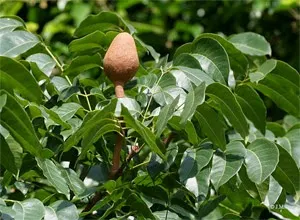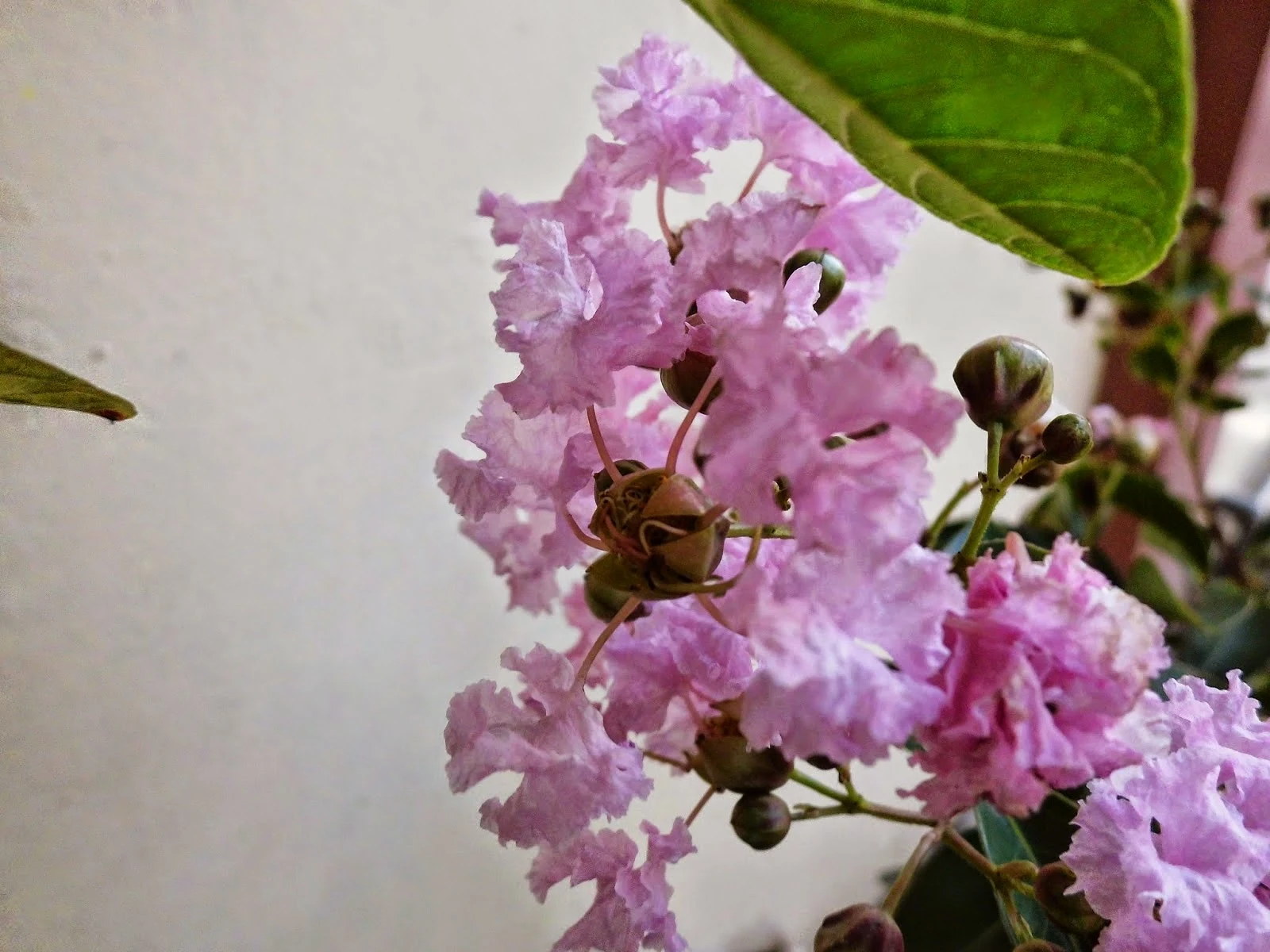By Liliana Usvat
Blog 307-365

The Dadap is a sacred tree in Bali and is considered a symbol of fertility. The tree features in Balinese ceremonies including the wedding ceremony.
Pollution
Got a city with a high ground pollution, cant seem to fix this problem at all, have planted a LOT of trees, got a water treatment, with enought to go around. And got water plant, with filter, just in case, but nothing works, is this a bug then?
Blog 307-365
Here are Some Anti Pollution Trees
Trembesi Tree or Samanea saman
Capable of absorbing carbon dioxide in large quantities, so highly recommended to be planted as a tree reforestation. Yet trambesi require a wide area.
Saman is a wide-canopied tree with a large symmetrical crown. It usually reaches a height of 25 m (82 ft) and a diameter of 40 m.
The leaves fold in rainy weather and in the evening, hence the name "rain tree" and "five o'clock tree" (Pukul Lima) in Malay. Several lineages of this tree are available, e.g., with reddish pink and creamish golden colored flowers.
Dadap Red Tree
The amazing tree that all the birds are attracted to is called a Coastal Coral Tree (Erythrina caffra).
Kafir-boom in it's home South Africa, Thong-lang in Thailand and Dadap or Dedap in Indonesia and Malaysia. It is drought tolerant which makes it well suited to Darwin's climate of wet - dry conditions.

The Dadap is a sacred tree in Bali and is considered a symbol of fertility. The tree features in Balinese ceremonies including the wedding ceremony.
Mahogany trees
The name mahogany was initially associated only with those islands in the West Indies under British control (French colonists used the term acajou, while in the Spanish territories it was called caoba).
The origin of the name is uncertain, but it could be a corruption of 'm'oganwo', the name used by the Yoruba and Ibo people of West Africa to describe trees of the genus Khaya, which is closely related to Swietenia. When transported to Jamaica as slaves, they gave the same name to the similar trees they saw there
Bungur Tree
Known to absorb air pollutants such as lead. Then the second These trees should be planted for reforestation in large cities, near the main streets crowded traffic.
It's no secret anymore if the motor vehicle to be the largest contributor of lead in the air. In contrast, trees like acacia trees should not be green belt. Why? since become one of the originators acacia of asthma. Likewise, the beautiful shape of palm trees, not sogreat benefits.
Longan trees
Hibiscus (Hibiscus rosa-sinensis L)
Able to absorb nitrogen that make our lungs so relieved.
Longan trees
Longan trees can produce thousands of ping-pong ball sized fruits that are eaten fresh or dried. They look a bit similar to ‘langsat’ and ‘longkong’. The fruits (also called Dragon Eye) can be eaten fresh, but can also be dried. Dried fruits have a dark color and are eaten as snacks or can be used in cooking.
Longan is native to South and Southeast Asia. A lot of fruits are produced in Thailand, China and Taiwan.
Longan is a member of the same family (Sapindaceae) as some other valuable fruits, including lychee and rambutan.
Pollution
Go to your parks and trees tabs look the the nature ones you will see the tree with the arrow on it chose that one.
Find the areas with ground pollution and plant those growing tree's in those area's.
They die off as they clean the land so you have to go back from time to time and replant them till the area has been cleaned up so keep an eye on those areas for needed replanting.
It is the only FAST way to clean it all up. Eventually over time it happens but it would take forever without the help of those planted and growing tree's.
- Trees have great benefits, such as raising the ground water tables in LA, and are useful helping to capture, filter, and restore rainwater to the groundwater table.
- A tree reduce topsoil erosion, prevent harmful land pollutants contained in the soil from getting into our waterways, slows down water runoff, and ensures that our ground water supplies are continually being replenished. For every 5% of tree cover added to a community, storm water runoff is reduced by approximately 2%.
- Research by the USFS shows that in a 1 inch rainstorm over 12 hours, the interception of rain by the canopy of the urban forest in Salt Lake City reduces surface runoff by about 11.3 million gallons or 17%. These values would increase as the canopy increases as well.
- Along with breaking the fall of rainwater, tree roots remove nutrients harmful to water ecology and quality.
- Trees act as natural pollution filters. Their canopies, trunks, roots, and associated soil and other natural elements of the landscape filter polluted particulate matter out of the flow toward the storm sewers. Reducing the flow of storm water reduces the amount of pollution that is washed into a drainage area. Trees use nutrients like nitrogen, phosphorus, and potassium- byproducts of urban living-which can pollute streams.
- More than 8% of children in Los Angeles - 217,000 - suffer from asthma. Studies have shown that an increase in tree-lined streets could lower that number by almost 25%.
- Research presented at the American Association for the Advancement of Science conference (AAAS) in Chicago showed that the presence of trees could cut crime by as much as 7%
- Two University of Illinois researchers (Kuo and Sullivan) studied how well residents of the Chicago Robert Taylor Housing Project (the largest public housing development in the world) were doing in their daily lives based upon the amount of contact they had with trees, and came to some the following conclusions:
- Trees have the potential to reduce social service budgets, decrease police calls for domestic violence, strengthen urban communities, and decrease the incidence of child abuse according to the study. Chicago officials heard that message last year. The city government spent $10 million to plant 20,000 trees, a decision influenced by Kuo's and Sullivan's research, according to the Chicago Tribune.
- Researchers found fewer reports of physical violence in homes that had trees outside the buildings. Of the residents interviewed, 14% of residents living in barren conditions have threatened to use a knife or gun against their children versus 3% for the residents living in green conditions.
A traditional filter strip is a grass area that is intended to treat sheet flow from adjacent impervious areas. Sheet flow is runoff that flows over land with no defined channels. Filter strips function by slowing runoff velocities, filtering out sediment and other pollutants, and providing some infiltration into underlying soils.
A forested filter strip provides a similar function but incorporates trees and a small ponding zone into the design The ponding zone is a small depression with a low berm where water ponds during most storm events (e.g., around a 1-inch rainfall).
The entire filter strip is planted with trees and shrubs, but since the depression is wetter than the remainder of the practice, the two zones are distinguished by referring to them as the ponding zone and the forested zone.
Additional benefits provided by a forested filter strip include evapotranspiration, wildlife habitat, and infiltration promoted by macropore formation.
It is time to dissociate logging and progress. It is not.
Link











